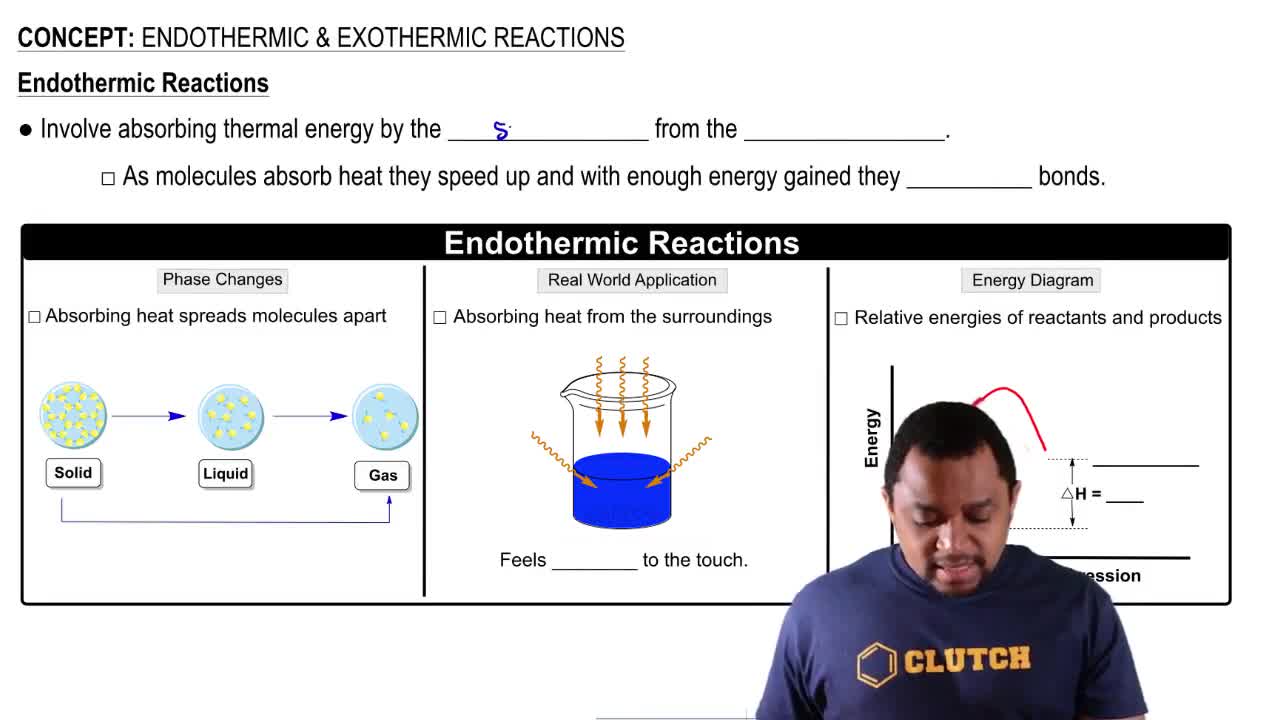Here are the essential concepts you must grasp in order to answer the question correctly.
Le Chatelier's Principle
Le Chatelier's Principle states that if a dynamic equilibrium is disturbed by changing the conditions, the position of equilibrium shifts to counteract the change. This principle helps predict how a system at equilibrium will respond to changes in concentration, temperature, or pressure, allowing us to determine the direction in which the reaction will shift.
Recommended video:
Endothermic Reactions
Endothermic reactions absorb heat from their surroundings, resulting in a decrease in temperature of the environment. In the context of equilibrium, increasing the temperature of an endothermic reaction will favor the formation of products, as the system shifts to absorb the added heat, thus promoting the forward reaction.
Recommended video:
Endothermic & Exothermic Reactions
Effect of Volume on Gaseous Equilibria
Changing the volume of a container affects the pressure of gaseous reactants and products. According to the ideal gas law, decreasing the volume increases pressure, which shifts the equilibrium toward the side with fewer moles of gas. Conversely, increasing the volume decreases pressure and shifts the equilibrium toward the side with more moles of gas, influencing the direction of the reaction.
Recommended video:




